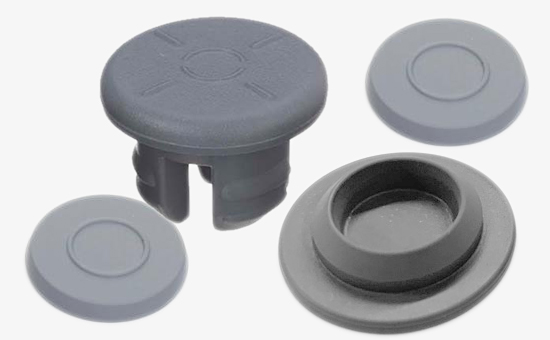
Under low temperature conditions, the hardness, rigidity, elastic modulus and internal friction loss of vulcanized rubber increase, and the elasticity decreases, resulting in a decrease in the working ability of rubber products, and even loss of working ability. When butyl reclaimed rubber replaces butyl rubber to produce various rubber products, improving the cold resistance of vulcanized rubber is of great significance to extending the service life of butyl reclaimed rubber products. So how can we improve the cold resistance of butyl reclaimed rubber vulcanizate? Which aspects should we start with?
1. Use with butyl rubber
Butyl rubber is a crystalline rubber with good low temperature performance, and its recovery performance increases with the increase of unsaturation. Butyl reclaimed rubber retains the basic performance characteristics of butyl rubber, which can replace a certain proportion of butyl rubber 2YLYY1026 to produce products and effectively reduce the cost of raw materials. Adding the appropriate brand of butyl rubber to the formula of butyl reclaimed rubber products can further improve the cold resistance of the butyl reclaimed rubber vulcanizate.
2. Plasticizer reduces brittleness temperature
The brittleness temperature is an important method to measure the cold resistance of vulcanizates. When using butyl reclaimed rubber to produce rubber products, the brittle temperature of butyl vulcanized rubber is much lower than the glass transition temperature. Adding an appropriate amount of plasticizer can significantly reduce the brittle temperature of vulcanized rubber. Butyl reclaimed rubber is commonly used as plasticizers such as dioctyl phthalate, trioctyl or dibenzyl phthalate, dibutyl sebacate, tricresyl phosphate and other plasticizers; improve the cold resistance of butyl reclaimed rubber vulcanizates It is recommended to use dioctyl sebacate, nonyl butoxydiol and low-viscosity paraffin oil.
3. Use large particle size carbon black
Carbon black is a commonly used reinforcing agent in the production of butyl reclaimed rubber products. Theoretically, the smaller the carbon black particle size, the higher the physical and mechanical properties of the vulcanizate, which mainly include tensile strength, tear strength, tensile stress, wear resistance, hardness and other indicators. To improve the cold resistance of butyl reclaimed rubber products, it is recommended to use large particle size carbon black, and the use of small particle size carbon black can further balance the relationship among mechanical strength and cold resistance of butyl reclaimed rubber vulcanizates. It should be noted that if the particle size of carbon black is too small, the vulcanizate is easy to agglomerate, so it needs to be carefully selected.
To improve the cold resistance of butyl reclaimed rubber vulcanizate, rubber product manufacturers can also start from the aspects of vulcanization system design, operation process, etc., while reducing costs, further optimizing the quality of the finished product and extending the service life; the editor will continue to discuss with you later problem.
Exclusive original article [commercial authorization] reprint, excerpt and excerpt in any form are prohibited without written authorization. Focus on Hongyun rubber: learn the process formula and raw material technology of producing rubber products from recycled rubber to help you reduce costs and increase profits